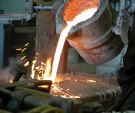 In this series I am going to discuss the evolution of the riser or the structural strength of the bow which houses the handle, to which the limbs are attached and other various accessories. Originally the riser and the limbs were actually one piece, as you would see in a bare bow or instinctive bow, however in most modern bows the riser is completely independent component.
In this series I am going to discuss the evolution of the riser or the structural strength of the bow which houses the handle, to which the limbs are attached and other various accessories. Originally the riser and the limbs were actually one piece, as you would see in a bare bow or instinctive bow, however in most modern bows the riser is completely independent component.
Historically, the original construction material was wood and sometimes combinations of different types of wood. Other historical materials included horn and sinew (A piece of tough fibrous tissue uniting muscle to bone or bone to bone; a tendon or ligament) to create composite bows. Beautiful laminated wooden bows and risers are still manufactured for lightweight, beauty, tradition, and style.
 Although some bows are still manufactured from various laminated hardwoods and are quite durable, the development of other modern components with materials such as carbon arrows and various strings, wooden risers were strained. Therefore bow makers were forced to invest in the development of other more durable materials for competitive archers to maintain that competitive edge. Competition target archers need enough arrow speed with great sight marks, with minimal string creep, since they practice a lot of shooting (anywhere from 150 – 1000 arrows a day). Wooden bows will eventually break under the additional loads of pressure applied from the stress and strain.
Although some bows are still manufactured from various laminated hardwoods and are quite durable, the development of other modern components with materials such as carbon arrows and various strings, wooden risers were strained. Therefore bow makers were forced to invest in the development of other more durable materials for competitive archers to maintain that competitive edge. Competition target archers need enough arrow speed with great sight marks, with minimal string creep, since they practice a lot of shooting (anywhere from 150 – 1000 arrows a day). Wooden bows will eventually break under the additional loads of pressure applied from the stress and strain.
Today there are two primary types of risers used by Olympic target archers, CNC machined aluminium and Carbon fibre or a combination of the two. In the past, other materials and manufacturing methods were used such as forging and casting.
Forging

This method hammers a metal bar under high temperature and high pressure that results in an extremely strong riser. Typically forging is an expense development process which requires machining, straightening and painting with very few variations.
Casting
 Usually a mix of aluminium and magnesium were developed with either die-casting or sand-casting methods. Still available in the market today with low-to-mid range bow are a relatively cheap to make once you have the mould.
Usually a mix of aluminium and magnesium were developed with either die-casting or sand-casting methods. Still available in the market today with low-to-mid range bow are a relatively cheap to make once you have the mould.
.
CNC Machined Aluminium

A computer controlled method to machine a riser from stress-relieved aircraft grade aluminium alloy until they weigh less than 3 pounds. Sometimes, in order to reduce the costs, risers can be extruded through a die to minimise the amount of machining required. CNC risers are usually anodised to provide a hard wearing finish.
Carbon Fibre

A method of layering synthetic fibres usually over a dense foam core mould, which is cured with resin epoxy to develop an extremely strong and lightweight riser. Although this method can be expensive to develop and test with, the process has almost infinite number of possibilities in terms of strength and flexibility of design.
Currently, the market is primarily CNC Machined Aluminium with overlayed Carbon Fibre to gain the best of both worlds. Who knows what the future holds for risers as target archers look to find the competitive edge and manufacturers investigate in cost savings.
